
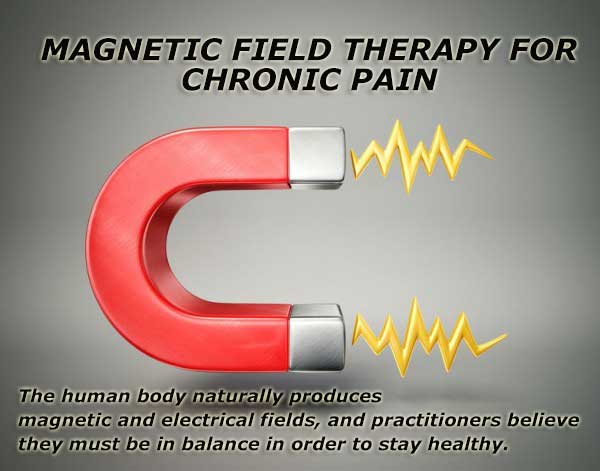 Magnetic Field Therapy, also known as bioelectricity, magneto biology, electromagnetic therapy, or magnetic healing, has been used in many forms for centuries. Electromagnetic therapy is based on the belief that an imbalance of the electromagnetic frequencies or fields of energy can cause illness, and that applying electrical energy to the body can correct this imbalance (Sharecare, 2019). The human body naturally produces magnetic and electrical fields, and practitioners believe they must be in balance in order to stay healthy. Magnets are used to help with various health issues.
Magnetic Field Therapy, also known as bioelectricity, magneto biology, electromagnetic therapy, or magnetic healing, has been used in many forms for centuries. Electromagnetic therapy is based on the belief that an imbalance of the electromagnetic frequencies or fields of energy can cause illness, and that applying electrical energy to the body can correct this imbalance (Sharecare, 2019). The human body naturally produces magnetic and electrical fields, and practitioners believe they must be in balance in order to stay healthy. Magnets are used to help with various health issues.
Sharecare/What is electromagnetic therapy. Retrieved from:
Healthwise Staff. (2018, June 28). MICHIGAN MEDICINE: UNIVERISTY OF MICHIGAN/Magnetic Field Therapy. Retrieved from: https://www.uofmhealth.org/health-library/aa141392spec
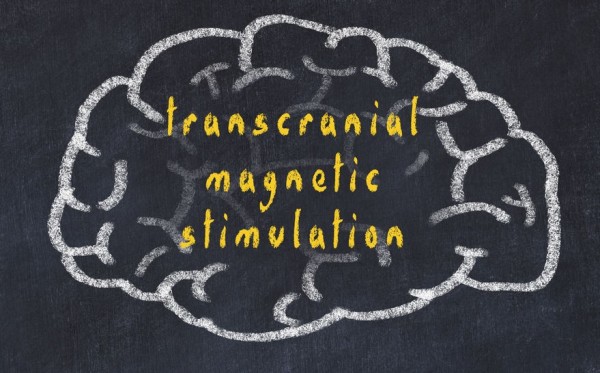
Transcranial Magnetic Stimulation (TMS)
This form of therapy uses low-frequency magnetic pulses to stimulate the brain. Transcranial Magnetic Stimulation has been FDA approved for helping with depression in the United States. For patients with treatment-resistant depression, TMS has been approved in Canada, Australia, New Zealand, the European Union, and Israel in addition to in the United States (Cook MD, 2017).
Studies are still being done, but it could also help with Amyotropic Lateral Sclerosis (ALS), Anxiety, Bipolar Disorders, Chronic Regional Pain Syndrome, Dystonia, Eating Disorders, Epilepsy, Migraine, Obsessive Compulsive Disorder (OCD), Schizophrenia, Stroke, and Tinnitus. It is also being used for Alzheimer’s Disease, Chronic Pain, Nicotine Addiction, Parkinson’s Disease, and Post-Traumatic Stress Disorder (PTSD). Typically, practitioners recommend it after medication and psychotherapy have shown to be ineffective.
There are two main types of TMS
Repetitive Transcranial Magnetic Stimulation (rTMS) has been around since 1985. It is primarily used for depression, and has been FDA approved for that since 2008. The second type of TMS is Deep Transcranial Magnetic Stimulation (dTMS). It was FDA approved for treating depression in 2013, and OCD in 2018. The difference between rTMS and dTMS is the type of coil. The dTMS coil has the ability to stimulate more areas of the brain. It can penetrate four centimeters below the skull.
Static Magnetic Field Therapy
 This type of therapy consists of placing magnets against the skin to help with various health concerns. Static Magnetic Field Therapy could be in the form of jewelry such as a bracelet, ring, necklace, bandage with a magnet, shoe insole, or special therapeutic mattress pad for sleeping. Bracelets may help with wrist pain or just general pain. Necklaces could help with shoulder or neck pain. Proponents of magnet therapy recommend magnetic foot insoles for people with diabetic peripheral neuropathy, leg aches and pains, circulatory problems of the lower extremities, or foot injuries and problems, and for people who stand all day (Winchester Hospital, 2019).
This type of therapy consists of placing magnets against the skin to help with various health concerns. Static Magnetic Field Therapy could be in the form of jewelry such as a bracelet, ring, necklace, bandage with a magnet, shoe insole, or special therapeutic mattress pad for sleeping. Bracelets may help with wrist pain or just general pain. Necklaces could help with shoulder or neck pain. Proponents of magnet therapy recommend magnetic foot insoles for people with diabetic peripheral neuropathy, leg aches and pains, circulatory problems of the lower extremities, or foot injuries and problems, and for people who stand all day (Winchester Hospital, 2019).
In order to treat larger body areas, wraps and belts are available. Many wraps are made out of a thermal material to have a warming effect, which helps with health issues like arthritis and injuries. The downfall with static magnetic therapy is it is unable to reach deep tissues, and it can't treat all the cells of the body at once. The effects are limited without the help of an experienced practitioner.Magnetic Therapy with Acupuncture
With this therapy, magnets are placed on meridians (energy pathways) where acupuncture needles are usually placed.
Pulse Electromagnetic Field Therapy (PEMF)
PEMF also known as low field magnetic stimulation (LFMS), uses pulses of low-level electromagnetic radiation for healing. The FDA has approved the use of PEMF technology for bone healing, post-surgical pain and healing, pain and inflammation, knee pain and even depression. (Follow the link above to read all about PEMF Therapy)
Palermo, Elizabeth. (2015, February 12). LIVESCIENCE/Does Magnetic Therapy Work?. Retrieved from: https://www.livescience.com/40174-magnetic-therapy.html
Beth Israel Lahey Health Winchester Hospital/Health Library. Retrieved from:
https://www.winchesterhospital.org/health-library/article?id=33778
Pawluk MD MSc, William. MATRIX REPATTERNING/Pulsed Electromagnetic Fields (PEMF): How They Heal. Retrieved from: https://www.matrixrepatterning.com/pulse-electromagnetic
Nall, Rachel. Healthline/What are the possible side effects and complications of rTMS?. (2016, September 19). Retrieved from: https://www.healthline.com/health/depression/repetitive-transcranial-magnetic-stimulation#side-effects
Amhc (advanced mental health care inc.)/ Deep TMS vs rTMSL What’s the difference?. Retrieved from: https://www.advancedmentalhealth.com/contents/tms/deep-tms-vs-rtms-whats-the-difference
Westside Neurotherapeutics/What Is The Difference Between DTMS And RTMS. Retrieved from: https://westsideneurotherapeutics.com/dtms/what-is-the-difference-between-dtms-and-rtms/
Cook MD, Ian. (2017, April 25). International Neuromodulation Society/Transcranial Magentic Stimulation (Repetitive Transcranial Magentic Stimulation, rTMS). Retrieved from: https://www.neuromodulation.com/TMS
WebMD/What is Magnetic Field Therapy?. (2019). Retrieved from:
https://www.webmd.com/pain-management/magnetic-field-therapy-overview
OSKA/10 Facts About PEMF Machines and What They Can Do For You. Retrieved from: https://www.oskawellness.com/blogs/blog/10-facts-about-pemf-machines-and-what-they-can-do-for-you
Static Magnets
There is a lack of scientific evidence for how well static magnets work to improve health conditions. However, some of the health conditions they have shown to help with include:
- Back, Foot Pain
- Fibromyalgia Pain
- Headaches
- Insomnia
- Joint Pain
- Peripheral Neuropathy
- Post-Polio Syndrome
- Rheumatoid Arthritis
- Wound Healing
Transcranial Magnetic Stimulation (TMS)
In the United States, TMS is mostly used for treating major depressive disorder. However, in many European countries TMS is approved for: Alzheimer’s Disease, Anxiety, Chronic Pain, Nicotine Addiction, OCD, Parkinson’s Disease, Post-Traumatic Stress Disorder (PTSD), Schizophrenia, and Stroke Rehabilitation. TMS has even shown promise in off-label treatment of conditions such as tinnitus, fibromyalgia, Tourette syndrome, autism spectrum disorder, and multiple sclerosis (Shubin, Segal, Smith, Robinson 2019).
Some health scenarios where TMS could be unsafe are: if people have metal in their body, are pregnant, have a history of seizures, or have brain damage.
Magnetic Therapy with Acupuncture (Follow the link to Hope Instilled’s content on Acupuncture to read more about what health conditions Acupuncture helps.)
Pulse Electromagnetic Field Therapy (PEMF)
(Follow the link to read Hope Instilled’s content on PEMF Therapy)
Beth Israel Lahey Health Winchester Hospital/Health Library. Retrieved from:
https://www.winchesterhospital.org/health-library/article?id=33778
WebMD/What is Magnetic Field Therapy?. (2019). Retrieved from:
https://www.webmd.com/pain-management/magnetic-field-therapy-overview
Shubin, Jennifer. Segal M.A., Robert. Smith M.A., Melinda. Robinson, Lawrence. (2019, June). Help Guide/Transcranial Magnetic Stimulation (TMS) Therapy. Retrieved from:
https://www.helpguide.org/articles/depression/transcranial-stimulation-therapy-tms.htm
Nall, Rachel. Healthline/What are the possible side effects and complications of rTMS?. (2016, September 19). Retrieved from: https://www.healthline.com/health/depression/repetitive-transcranial-magnetic-stimulation#side-effects
Mayo Clinic Staff. (2018, November 27). MAYO CLINIC/Transcranial magnetic stimulation. Retrieved from: https://www.mayoclinic.org/tests-procedures/transcranial-magnetic-stimulation/about/pac-20384625
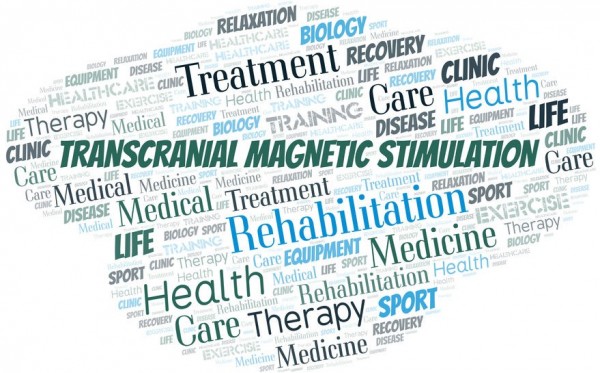 Benefits of Transcranial Magnetic Stimulation (TMS)
Benefits of Transcranial Magnetic Stimulation (TMS)
For people who haven't had success with medication, over half see improvements in symptoms with TMS treatments. Typically, one in three no longer experience symptoms of depression. However, it is impossible to say that the depressive symptoms won't return. It is important to also consider lifestyle (diet, exercise, toxin exposure), relationships, psychological factors, and social factors, because genetics may not be the only cause of depressive symptoms. Another benefit of TMS is that it's a non-invasive treatment, it is significantly safer with a lot less side effects than antidepressant medications.
FDA Approvals for TMS
The FDA approved rTMS in 2008 as a treatment to alleviate symptoms of mildly treatment-resistant depression, in which patients have not found relief from antidepressant medication. (Cook, 2017). The coil for dTMS was developed by BrainsWay in 2000. dTMS was approved for depression in 2013, and was recently approved in 2018 for OCD (Amhc).
Success Rates for Repetitive Transcranial Magnetic Stimulation (rTMS) and Deep Transcranial Magnetic Stimulation (dTMS)
Studies show that after six weeks (30 sessions) of treatment, the response rate of rTMS is about 58% and the percentage of patients who receive remission is about 37% (Serenity Mental Health Centers, 2019). Studies on deep TMS (Brainsway D for depression) show that after four weeks (20 sessions), 64% of patients responded positively to the treatment and 42% achieved remission (Serenity Mental Health Centers, 2019). After 30 sessions, results have shown 75% of people see results from treatment with 51% going into remission.
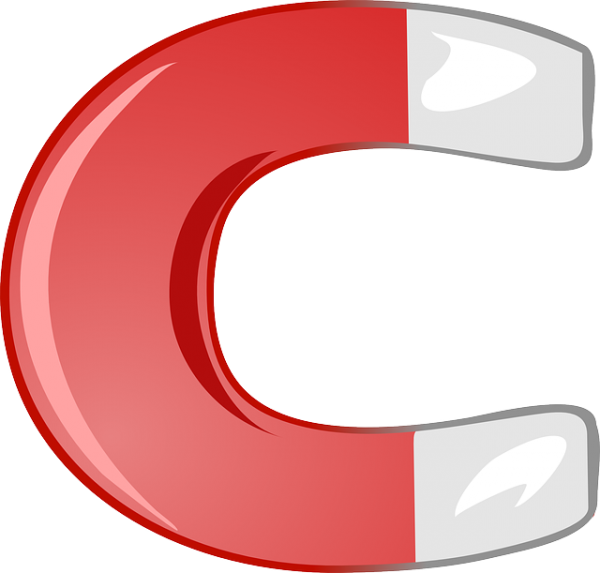
Benefits of Static Magnets
Magnets have been used for thousands of years to help with various health conditions, but still lack quality scientific evidence that they are in fact an effective treatment option. The thought is that they must has some physiological effect, and may affect tissues, cells, fluid, or blood. Since all of our bodies respond differently to different treatments, and everyone’s body works differently, even with the same illness present, this could very well be a treatment that just depends on the individual, or could at times be a placebo effect. However, it is a very safe treatment overall, with the exception of a few health scenarios (mentioned in the safety section). Another consideration is whether the magnets being used are the proper types, the right strength, and are being used for the right length of time. These things are all still being studied.
Magnetic Therapy with Acupuncture (Follow the link to Hope Instilled’s content on Acupuncture to read more about the benefits of Acupuncture in general.)
Pulse Electromagnetic Field Therapy (PEMF)
(Follow the link to read Hope Instilled’s content on PEMF Therapy)
NEWS MEDICAL LIFESCIENCES/What Type of conditions can PEMF therapy treat?. (2018, March 22). Retrieved from: https://www.news-medical.net/whitepaper/20180320/What-types-of-conditions-can-PEMF-therapy-treat.aspx
Amhc (advanced mental health care inc.)/ Deep TMS vs rTMSL What’s the difference?. Retrieved from: https://www.advancedmentalhealth.com/contents/tms/deep-tms-vs-rtms-whats-the-difference
Cook MD, Ian. (2017, April 25). International Neuromodulation Society/Transcranial Magentic Stimulation (Repetitive Transcranial Magentic Stimulation, rTMS). Retrieved from: https://www.neuromodulation.com/TMS
Serenity Mental Health Centers/The Differences Between rTMS and dTMS. (2019, February 5). Retrieved from: https://serenitymentalhealthcenters.com/the-differences-between-rtms-and-dtms/
Transcranial Magnetic Stimulation (TMS)
TMS is a non-invasive treatment. It isn’t a painful treatment, but may cause some discomfort. The procedure is associated with mild to moderate side effects, including:
- feelings of lightheadedness
- temporary hearing problems, due to the sometimes loud magnet noise
- mild headaches (most common side effect)
- tingling in the face, jaw, or scalp
(Nall, 2016)
Some rare side effects that can occur include mania (for people with bipolar disorder), hearing loss (only without proper ear protection), or seizures. Make sure to notify your doctor about any health conditions you have, and any medications/supplements you are on, before moving forward with this treatment.
 Safety of Static Magnetic Therapy
Safety of Static Magnetic Therapy
Static Magnetic Field Therapy, which typically involves placing magnets on the skin (a person wearing low-intensity magnetic jewelry), is very safe. With such a low level of frequency side effects are virtually non-existent over a short period of time. It is yet to be seen whether this could cause a problem in the long-term. However, a study was done on people sleeping on magnetic mattresses every night for four months, and no side effects were found. It is still advised not to wear the magnets all the time because like with most things moderation is the best policy.
A few scenarios where magnets are not recommended include when wearing a pacemaker, if pregnant, if you have an electrical implant like an insulin pump or brain stimulator. Additionally, if you have a very painful condition, go to a doctor and find out what you are dealing with first. This is not a treatment for a serious health condition.
Aren’t EMF’s bad?
Not all EMF’s are bad, just the manmade unnatural EMF’s from electrical equipment: TV’s, cell phones, computers, microwave ovens, hair dryers, clock radios, and so on. EMF’s fall into two different categories: non-ionizing (low-level radiation known to be harmless to people), and ionizing (high-level radiation which could cause DNA and cellular damage). Evidence is mounting that a new form of pollution called “electrosmog” is a very real threat because it is disruptive to cell metabolism (Pawluk MD).
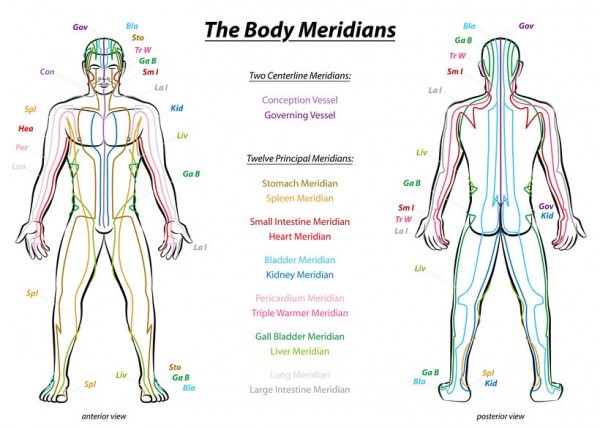
Magnetic Therapy with Acupuncture
Many of the safety precautions for Static Magnets will be the same with Magnetic Therapy with Acupuncture. (Follow the link to Hope Instilled’s content on Acupuncture to read more about the safety of general Acupuncture.)
Pulse Electromagnetic Field Therapy (PEMF)
(Follow the link to read Hope Instilled’s content on PEMF Therapy)
Pawluk MD MSc, William. MATRIX REPATTERNING/Pulsed Electromagnetic Fields (PEMF): How They Heal. Retrieved from: https://www.matrixrepatterning.com/pulse-electromagnetic
Beth Israel Lahey Health Winchester Hospital/Health Library. Retrieved from:
https://www.winchesterhospital.org/health-library/article?id=33778
Senelick M.D. (2015, February 12). Richard C. HUFFPOST/Can Magnetic Therapy Relieve Pain?. Retrieved from: https://www.huffpost.com/entry/magnetic-therapy-are-magnets-for-pain_b_801664
Nall, Rachel. Healthline/What are the possible side effects and complications of rTMS?. (2016, September 19). Retrieved from: https://www.healthline.com/health/depression/repetitive-transcranial-magnetic-stimulation#side-effects
Mayo Clinic Staff. (2018, November 27). MAYO CLINIC/Transcranial magnetic stimulation. Retrieved from: https://www.mayoclinic.org/tests-procedures/transcranial-magnetic-stimulation/about/pac-20384625
Transcranial Magnetic Stimulation (TMS)
With Transcranial Magnetic Stimulation treatment, an electromagnetic coil will be placed near the head. For health conditions dealing with mood it is placed by the forehead, which is the closest placement to the area of the brain that regulates mood. Magnetic pulses are then passed from the coil to the brain, which activates electrical current in particular nerve cells. For depression, doctors would target the prefrontal cortex of the brain stimulating those cells through electrical current. It's thought to activate regions of the brain that have decreased activity in depression (Mayo Clinic Staff, 2018). The biology of why it works isn't completely understood though.
There are three different types of TMS devices, you can read more about those on HelpGuide.org.
Static Magnets
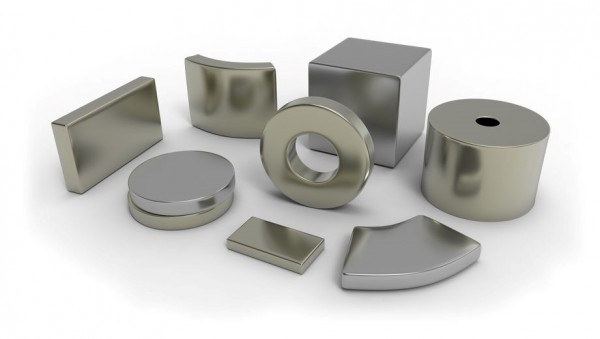 There is no strong evidence currently as to how static magnets provide healing, but there are many theories. One theory is that they affect charged particles in the blood, nerves and cell membranes. They could also change biochemical reactions altering bioenergetic fields, also known as Chi or life force energy. The magnets work to manipulate these energy fields.
There is no strong evidence currently as to how static magnets provide healing, but there are many theories. One theory is that they affect charged particles in the blood, nerves and cell membranes. They could also change biochemical reactions altering bioenergetic fields, also known as Chi or life force energy. The magnets work to manipulate these energy fields.
All of the molecules in the human body have some magnetic energy, and it is thought your magnetic field can become out of balance, and the static magnets rebalance the magnetic fields. Also, calcium and potassium ions help the cells send signals. In tests, scientists have seen magnets change how these ions act (WebMD, 2019). But, there is no evidence currently pointing to the same effect happening with cells actually inside the body. There is also a bit of evidence to suggest that magnets work by influencing muscle metabolism.
What Types of Magnets Are Used?
Therapeutic static magnets are not the same thing as a refrigerator magnet. A regular refrigerator magnet is 200 gauss. Therapeutic magnets can be anywhere from 200 to 10,000 gauss, but most of them are 400 to 800 gauss. Both unipolar (north and south on opposite ends) and alternating-pole devices (north and south on the same end alternating) can be used therapeutically. Which one is better? It all depends on the health scenario.
Magnetic Therapy with Acupuncture
Magnetic Therapy with Acupuncture will work similar to the explanation on static magnets, but you can read about the purpose of applying them to meridian lines by following the link above to Hope Instilled’s general content on Acupuncture.
Pulse Electromagnetic Field Therapy (PEMF)
(Follow the link to read Hope Instilled’s content on PEMF Therapy)
Serenity Mental Health Centers/The Differences Between rTMS and dTMS. (2019, February 5). Retrieved from: https://serenitymentalhealthcenters.com/the-differences-between-rtms-and-dtms/
Beth Israel Lahey Health Winchester Hospital/Health Library. Retrieved from: https://www.winchesterhospital.org/health-library/article?id=33778
WebMD/What is Magnetic Field Therapy?. (2019). Retrieved from:
https://www.webmd.com/pain-management/magnetic-field-therapy-overview
Shubin, Jennifer. Segal M.A., Robert. Smith M.A., Melinda. Robinson, Lawrence. (2019, June). Help Guide/Transcranial Magnetic Stimulation (TMS) Therapy. Retrieved from: https://www.helpguide.org/articles/depression/transcranial-stimulation-therapy-tms.htm
Mayo Clinic Staff. (2018, November 27). MAYO CLINIC/Transcranial magnetic stimulation. Retrieved from: https://www.mayoclinic.org/tests-procedures/transcranial-magnetic-stimulation/about/pac-20384625
Ancient History
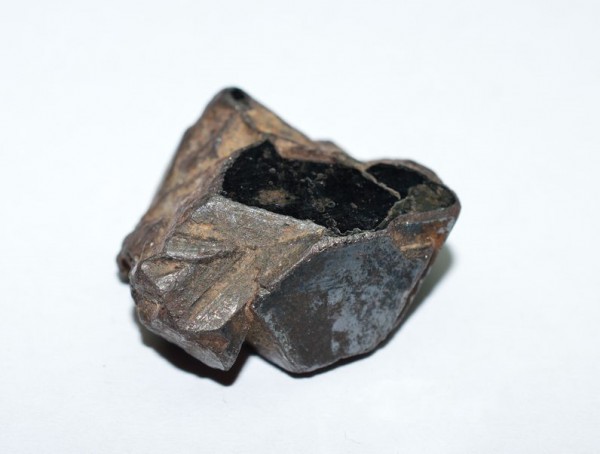 Around 4000BC Hindus refer to treatment of disease with magnetized stones (lodestones) (Pawluk). In The Yellow Emperor’s Book of Internal Medicine, lodestones were recorded as being used on acupuncture points around 2000 B.C. Lodestones are “magnetic stones,” they are also known for being used in navigational compasses in the Middle Ages.
Around 4000BC Hindus refer to treatment of disease with magnetized stones (lodestones) (Pawluk). In The Yellow Emperor’s Book of Internal Medicine, lodestones were recorded as being used on acupuncture points around 2000 B.C. Lodestones are “magnetic stones,” they are also known for being used in navigational compasses in the Middle Ages.
Egyptians are said to have used lodestones on a regular basis too. Records mention Cleopatra even wearing a small magnet with the purpose of maintaining her youth. In Greece, Hippocrates, father of modern medicine, is said to have used magnets for pain as well. He used lodestones to help with relief from headaches. The Greek physician Galen noted the cleansing powers of magnetism in his book De Simplicum Medicamentorum Temperamentis Ac Facultatibus around 200 B.C. (PEMF.com).
Early and Mid-Modern History
Paraclesus, Swiss alchemist and physician known as the founder of toxicology, used lodestones to treat psychiatric disorders and seizures in the early 1500s. German physician Franz Mesmer also used magnets in order to treat psychiatric disorders. He developed the theory of “animal magnetism,” describing the transfer of energy between things naturally. With this theory Scottish physician James Brain developed hypnosis which is compared to Qi of Traditional Chinese Medicine. Even the father of Homeopathy, German physician Samuel Hahnemann, used magnets in his treatments in the late-18th century.
Inventions leading to TMS and PEMF Devices
In the U.S. scientist Michael Faraday created many inventions and concepts utilizing the study of electromagnetism. One of the most notable being the foundation of electric motors. Additionally, he also proposed the theory of electromagnetic field (forces extending into the space around a conductor), but he died before his theory was accepted. Faraday was influential in the design of TMS because he was the first to create a magnetic field by running electricity through a coil. The first official TMS device was developed by Anthony Barker from the UK with a team of colleagues in 1985.
Nikola Tesla also used the relationship of electricity and magnetic fields, and helped in the development of Alternating Current (AC) electrical systems. He has many more notable inventions including radar, X-rays, remote controls, induction motors, and more. Tesla is also responsible for designing the first magnetic loop coil, which is used in all of today’s PEMF machines. Electro-magnetism became a concept at the end of the 19th century with the electron being discovered. Albert Einstein showed that electricity and magnetism are not discrete phenomena, but different aspects of the same phenomenon (PEMF.com).
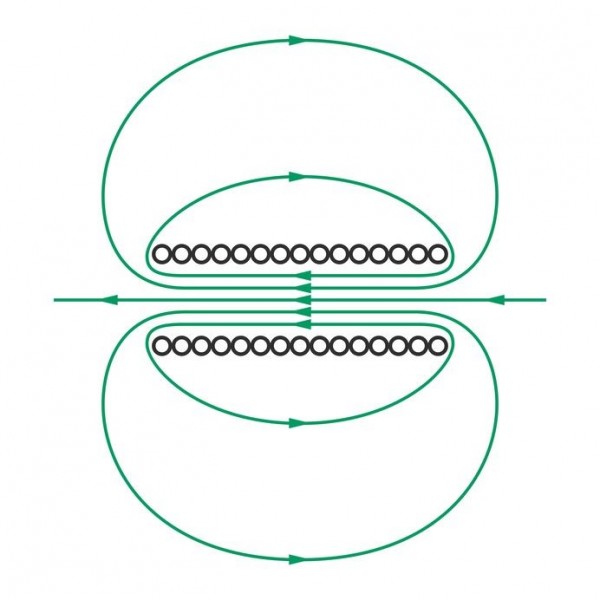 Magnetism and electricity were actually added to medical textbook as therapeutic alternatives for fatigue, arthritis, and insomnia. Due to politics and the growth of pharmaceuticals, for nearly 60 years up until the mid 1970s magnetic therapies greatly diminished. It wasn’t until 1997 that the U.S. took an interest in well-conducted clinical trials of magnets. Subsequently, results of several preliminary studies suggested that both static magnets and electromagnetic therapy may indeed offer therapeutic benefits for several disorders (Winchester Hospital).
Magnetism and electricity were actually added to medical textbook as therapeutic alternatives for fatigue, arthritis, and insomnia. Due to politics and the growth of pharmaceuticals, for nearly 60 years up until the mid 1970s magnetic therapies greatly diminished. It wasn’t until 1997 that the U.S. took an interest in well-conducted clinical trials of magnets. Subsequently, results of several preliminary studies suggested that both static magnets and electromagnetic therapy may indeed offer therapeutic benefits for several disorders (Winchester Hospital).
Magnetic Therapy with Acupuncture
The start of Magnetic Therapy with Acupuncture started in the 20th century with Japanese Acupuncturist Yoshio Manaka. This was also the start of self-applied medicine. People would spread a plaster containing magnets onto the painful areas of their body. This treatment, jewelry, and mattress pads were popular among the elderly citizens. Both magnets and electromagnetic machines grew in popularity in the 1970’s for treatment of sports-related injuries among athletes.
View more about the history of PEMF Therapy on Hope Instilled: Pulsed Electromagnetic Field Therapy
Brainfit/History of TMS for Treatment of Depression. Retrieved from:
http://www.brainefit.net/history-of-tms.html
PEMF.com/History. Retrieved from:
https://www.pemf.com/en/history.html
Pawluk MD, William. DRPAWLUK.COM/HISTORY OF MAGNETIC FIELD THERAPY. Retrieved from: https://www.drpawluk.com/education/magnetic-science/history-magnetic-field-therapy/
Beth Israel Lahey Health Winchester Hospital/Health Library. Retrieved from: https://www.winchesterhospital.org/health-library/article?id=33778
OSKA/10 Facts About PEMF Machines and What They Can Do For You. Retrieved from: https://www.oskawellness.com/blogs/blog/10-facts-about-pemf-machines-and-what-they-can-do-for-you
Transcranial Magnetic Stimulation (TMS)
Transcranial Magnetic Stimulation has been proven to be very effective for depression, but there are many studies showing its success with health conditions beyond that.
Here are a few studies representing the effectiveness of TMS:
Safety of Transcranial Magnetic Stimulation in Children: A Systematic Review of the Literature.
Efficacy of transcranial magnetic stimulation for depression confirmed in new study
Static Magnets
Scientific evidence to support the effectiveness of static magnets for treating any health conditions is lacking. However, wearable magnets are still very popular. Global sale of therapeutic magnets is estimated to be at least $1 billion a year, according to the BBC (Palermo, 2015).
There are a few studies that show static magnets have effective results here:
Beth Israel Lahey Health Winchester Hospital
Magnetic Therapy with Acupuncture
We do not know of any scientific studies for magnetic therapy with acupuncture specifically. However, you can follow the link above to read Hope Instilled’s content on scientific evidence for general Acupuncture.
Pulse Electromagnetic Field Therapy (PEMF)
(Follow the link to read Hope Instilled’s content on PEMF Therapy)
Palermo, Elizabeth. (2015, February 12). LIVESCIENCE/Does Magnetic Therapy Work?. Retrieved from: https://www.livescience.com/40174-magnetic-therapy.html
Practitioners who provide TMS are typically: Psychiatrists, Medical Doctors, Therapists, or Social Workers. In order to begin providing TMS, practitioners just need to complete a course to receive the proper training. Here is an example of what that might look like: tms health education.
Magnetic Therapy with Acupuncture
(View the education of an Acupuncturist by following the link above)
Pulse Electromagnetic Field Therapy (PEMF)
(Follow the link to read Hope Instilled’s content on PEMF Therapy)
Tms health education/Introduction to TMS Therapy. Retrieved from:
Finding a Practitioner for Transcranial Magnetic Stimulation (TMS)
 Since TMS is often covered by insurance in the U.S., the best way to find a practitioner would probably be to ask your primary doctor, a therapist, or a practitioner that specializes in mental health. Otherwise, you can just run a general website search to find a practitioner near you.
Since TMS is often covered by insurance in the U.S., the best way to find a practitioner would probably be to ask your primary doctor, a therapist, or a practitioner that specializes in mental health. Otherwise, you can just run a general website search to find a practitioner near you.
Keep in mind, you will likely be required to pass a physical or psychiatric evaluation in order to determine if TMS is the best solution for your health condition. It is also important to check with your insurance provider because the cost of TMS could be quite expensive without the help of insurance. Additionally, you may be required to provide documentation showing medication and psychotherapy treatments didn’t work for you.
One place to find a TMS practitioner in the United States is through searching the NeuroStar Advanced Therapy directory.
Finding a Practitioner for Acupuncture
For Magnetic Therapy with Acupuncture, you would want to find a practitioner who practices acupuncture. However, not all acupuncturists may provide magnetic therapy. This isn’t a very popular treatment, at least not in the U.S., so it might be a bit tricky to find one.
Pulse Electromagnetic Field Therapy (PEMF)
(Follow the link to read Hope Instilled’s content on PEMF Therapy)
Mayo Clinic Staff. (2018, November 27). MAYO CLINIC/Transcranial magnetic stimulation. Retrieved from: https://www.mayoclinic.org/tests-procedures/transcranial-magnetic-stimulation/about/pac-20384625
An appointment for TMS can be just a half hour session to an hour session. The practitioner will either have you sit or lie down, and then give you earplugs to put in your ears as you relax. Then, an electromagnetic coil is placed near your head, and will be switched on and off to provide stimulating pulses. People mention feeling a knocking or tapping feeling as the pulses move through their brain. However, it is not painful. It could also cause some tingling in the muscles in your face. Your doctor will determine the amount of magnetic energy needed by increasing the magnetic dose until your fingers or hands twitch (Mayo Clinic Staff). This is the mapping part also called the motor threshold. This won’t be checked at every appointment, but may be reassessed at some point.
Once the doctor knows the amount of energy needed, you will just sit comfortable with the coil near your head for about 40 minutes or so with rTMS and 20 minutes with dTMS. Once the treatment is over, you can return to your regular routine. Typically, if symptoms don’t start to fade after treatment, it probably won’t be worth it to try again. But, if symptoms do improve, then this treatment can be repeated.
This treatment is covered by many health insurance companies along with Medicare in the U.S. This treatment may be recommended to do 5 times a week for 4 to 6 weeks.
Magnetic Therapy with Acupuncture
(View What to Expect at an initial appointment with an Acupuncturist by following the link above)
Pulse Electromagnetic Field Therapy (PEMF)
(Follow the link to read Hope Instilled’s content on PEMF Therapy)
Nall, Rachel. Healthline/What are the possible side effects and complications of rTMS?. (2016, September 19). Retrieved from: https://www.healthline.com/health/depression/repetitive-transcranial-magnetic-stimulation#side-effects
Mayo Clinic Staff. (2018, November 27). MAYO CLINIC/Transcranial magnetic stimulation. Retrieved from: https://www.mayoclinic.org/tests-procedures/transcranial-magnetic-stimulation/about/pac-20384625
Westside Neurotherapeutics/What Is The Difference Between DTMS And RTMS. Retrieved from: https://westsideneurotherapeutics.com/dtms/what-is-the-difference-between-dtms-and-rtms/
JOHN HOPKINS MEDICINE/Frequently Asked Questions About TMS. (2019). Retrieved from:
https://www.hopkinsmedicine.org/psychiatry/specialty_areas/brain_stimulation/tms/faq_tms.html
Beth Israel Lahey Health Winchester Hospital/Health Library. Retrieved from:
https://www.winchesterhospital.org/health-library/article?id=33778
Shubin, Jennifer. Segal M.A., Robert. Smith M.A., Melinda. Robinson, Lawrence. (2019, June). Help Guide/Transcranial Magnetic Stimulation (TMS) Therapy. Retrieved from:
https://www.helpguide.org/articles/depression/transcranial-stimulation-therapy-tms.htm
Pawluk MD, William. DRPAWLUK.COM/HISTORY OF MAGNETIC FIELD THERAPY. Retrieved from:
https://www.drpawluk.com/education/magnetic-science/history-magnetic-field-therapy/
WebMD/What is Magnetic Field Therapy?. (2019). Retrieved from:
https://www.webmd.com/pain-management/magnetic-field-therapy-overview
Healthwise Staff. (2018, June 28). MICHIGAN MEDICINE: UNIVERISTY OF MICHIGAN/Magnetic Field Therapy. Retrieved from: https://www.uofmhealth.org/health-library/aa141392spec
Palermo, Elizabeth. (2015, February 12). LIVESCIENCE/Does Magnetic Therapy Work?. Retrieved from: https://www.livescience.com/40174-magnetic-therapy.html
Senelick M.D. (2015, February 12). Richard C. HUFFPOST/Can Magnetic Therapy Relieve Pain?. Retrieved from: https://www.huffpost.com/entry/magnetic-therapy-are-magnets-for-pain_b_801664
Pawluk MD MSc, William. MATRIX REPATTERNING/Pulsed Electromagnetic Fields (PEMF): How They Heal. Retrieved from: https://www.matrixrepatterning.com/pulse-electromagnetic
PEMF.com/History. Retrieved from:
https://www.pemf.com/en/history.html
Nall, Rachel. Healthline/What are the possible side effects and complications of rTMS?. (2016, September 19). Retrieved from: https://www.healthline.com/health/depression/repetitive-transcranial-magnetic-stimulation#side-effects
Mayo Clinic Staff. (2018, November 27). MAYO CLINIC/Transcranial magnetic stimulation. Retrieved from: https://www.mayoclinic.org/tests-procedures/transcranial-magnetic-stimulation/about/pac-20384625
Cook MD, Ian. (2017, April 25). International Neuromodulation Society/Transcranial Magentic Stimulation (Repetitive Transcranial Magentic Stimulation, rTMS). Retrieved from: https://www.neuromodulation.com/TMS
NEWS MEDICAL LIFESCIENCES/What Type of conditions can PEMF therapy treat?. (2018, March 22). Retrieved from: https://www.news-medical.net/whitepaper/20180320/What-types-of-conditions-can-PEMF-therapy-treat.aspx
Amhc (advanced mental health care inc.)/ Deep TMS vs rTMSL What’s the difference?. Retrieved from: https://www.advancedmentalhealth.com/contents/tms/deep-tms-vs-rtms-whats-the-difference
Brainfit/History of TMS for Treatment of Depression. Retrieved from:
http://www.brainefit.net/history-of-tms.html
Sharecare/What is electromagnetic therapy. Retrieved from: https://www.sharecare.com/health/alternative-medicines/what-is-electromagnetic-therapy#targetText=Electromagnetic%20therapy%20works%20with%20electricity,body%20can%20correct%20this%20imbalance.
Westside Neurotherapeutics/What Is The Difference Between DTMS And RTMS. Retrieved from: https://westsideneurotherapeutics.com/dtms/what-is-the-difference-between-dtms-and-rtms/
Serenity Mental Health Centers/The Differences Between rTMS and dTMS. (2019, February 5). Retrieved from: https://serenitymentalhealthcenters.com/the-differences-between-rtms-and-dtms/
Tms health education/Introduction to TMS Therapy. Retrieved from: https://tmshealtheducation.com/tms-introduction-course/
